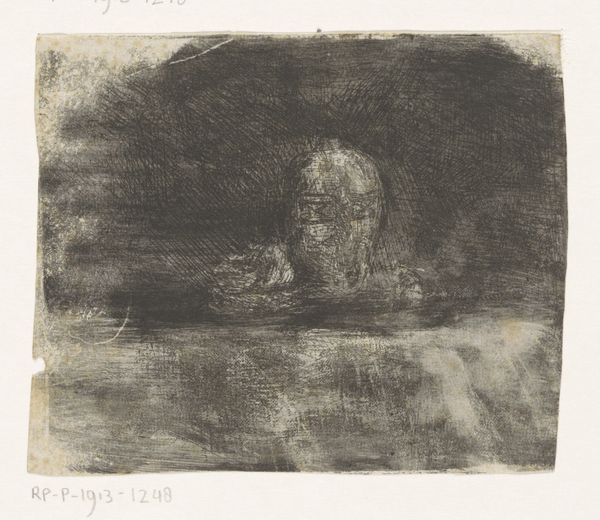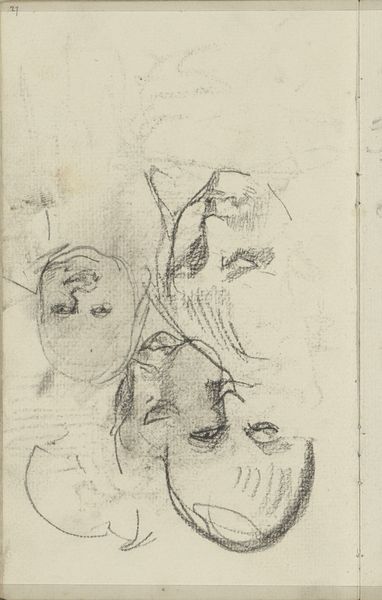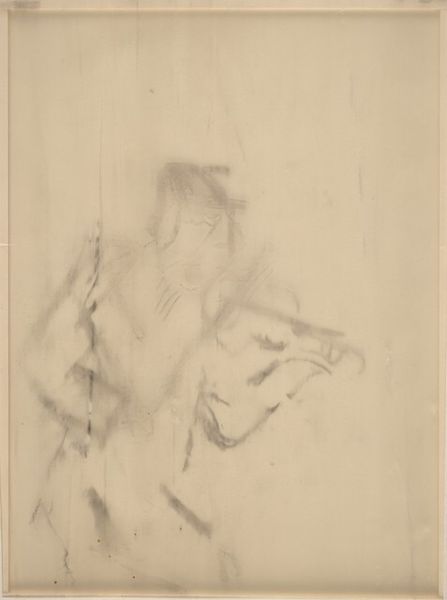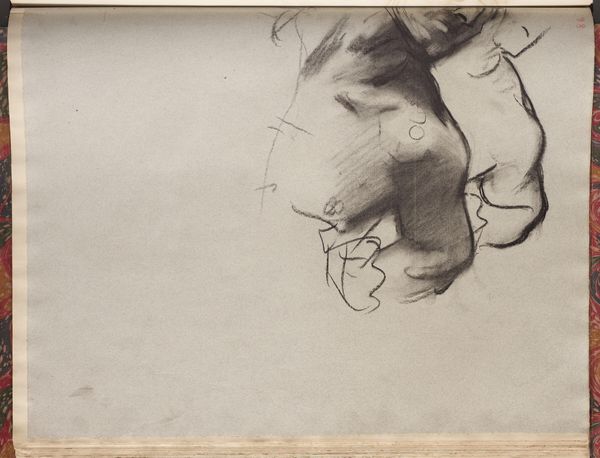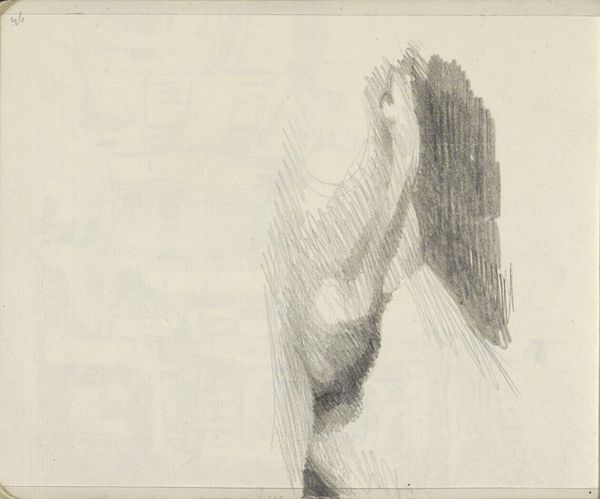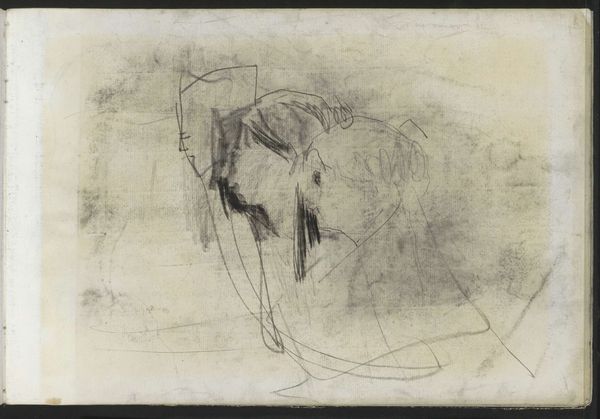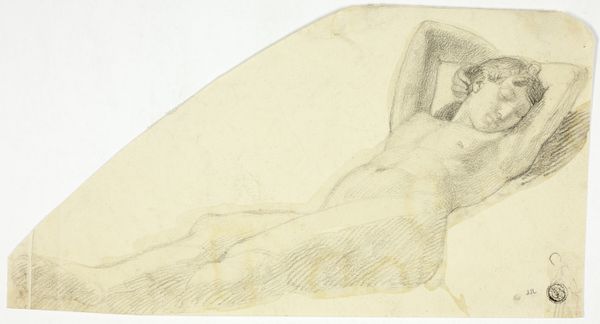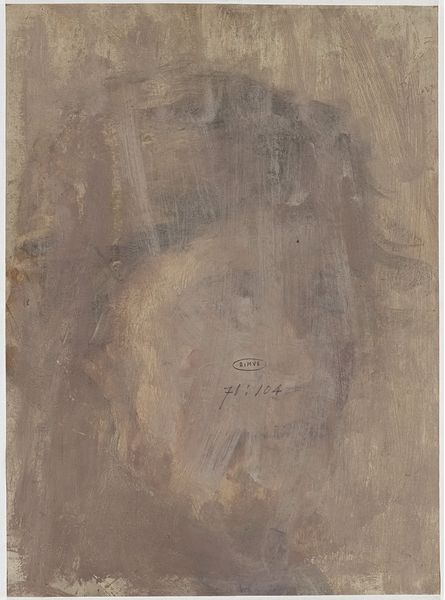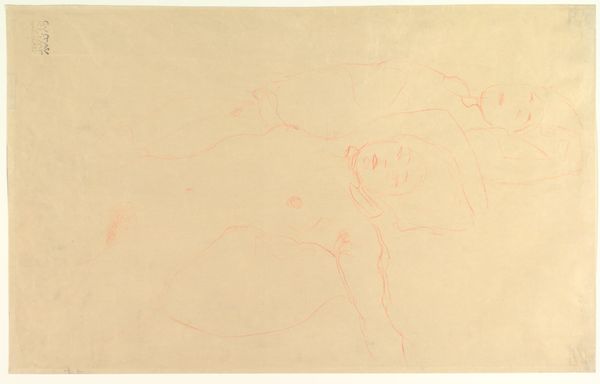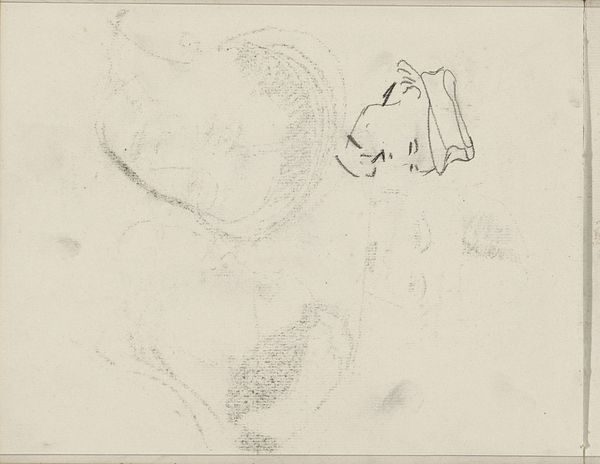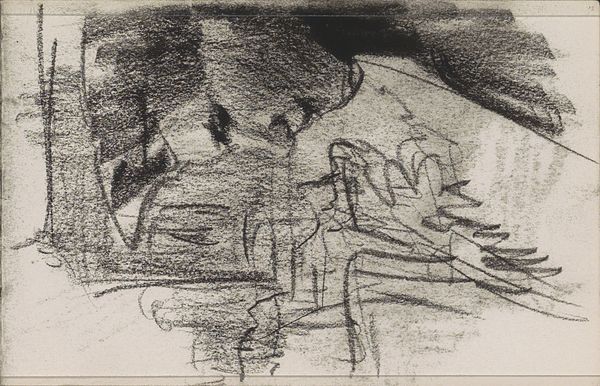
Dimensions: 156 mm (height) x 205 mm (width) (bladmaal)
Curator: Welcome. We are looking at Nicolai Abildgaard's "Et fantastisk deformt hoved," or "A fantastic deformed head," a drawing made with pencil and charcoal sometime between 1743 and 1809, here at the SMK, the National Gallery of Denmark. Editor: Wow. My first impression? Raw, unnerving. Like peering into someone's… inner turmoil. The distorted features really hit you. It feels almost… visceral. Curator: Indeed. Abildgaard, working in the late 18th and early 19th centuries, was deeply involved with Romanticism and Neoclassicism. This drawing, though seemingly a simple study, reveals the influence of Romanticism’s exploration of intense emotion. Editor: I get that. Neoclassicism is there with that anatomical focus, the rendering of light and shadow. But then comes the pure emotional expression and throws the balance right out the window, or the ideal out the window. Like someone screaming into a pillow. Curator: Precisely. Consider how Abildgaard lived in a period of intense political upheaval, witnessing revolution and social change. "Deformed" takes on a new meaning in that context. Is it the head that’s deformed, or the world it perceives? Is this an acknowledgement of the suffering? Editor: Could be both, right? And that exaggerated nose… it's grotesque but also strangely comical. You can almost hear the anguished snort. I keep thinking of political cartoons. He must have seen it all. He used this tool for that, almost as a therapy. Curator: Definitely. And, as an academic artist, Abildgaard likely studied anatomy extensively, which makes the purposeful distortion even more poignant. There's a commentary here about idealized beauty, perhaps even societal expectations of rationality. It's there on the surface as if the work invites you into these deeper social themes. Editor: Absolutely. There’s something deeply human in the ugliness, if that makes sense. A kind of liberating honesty. The work defies you not to be affected. I am sitting here thinking, "It's OK. Scream as loud as you can!" Curator: I agree entirely. It transcends a mere portrait to become a powerful expression of existential discomfort. Thank you for these observations. Editor: Anytime! I'll think twice before repressing another good scream!
Comments
No comments
Be the first to comment and join the conversation on the ultimate creative platform.
